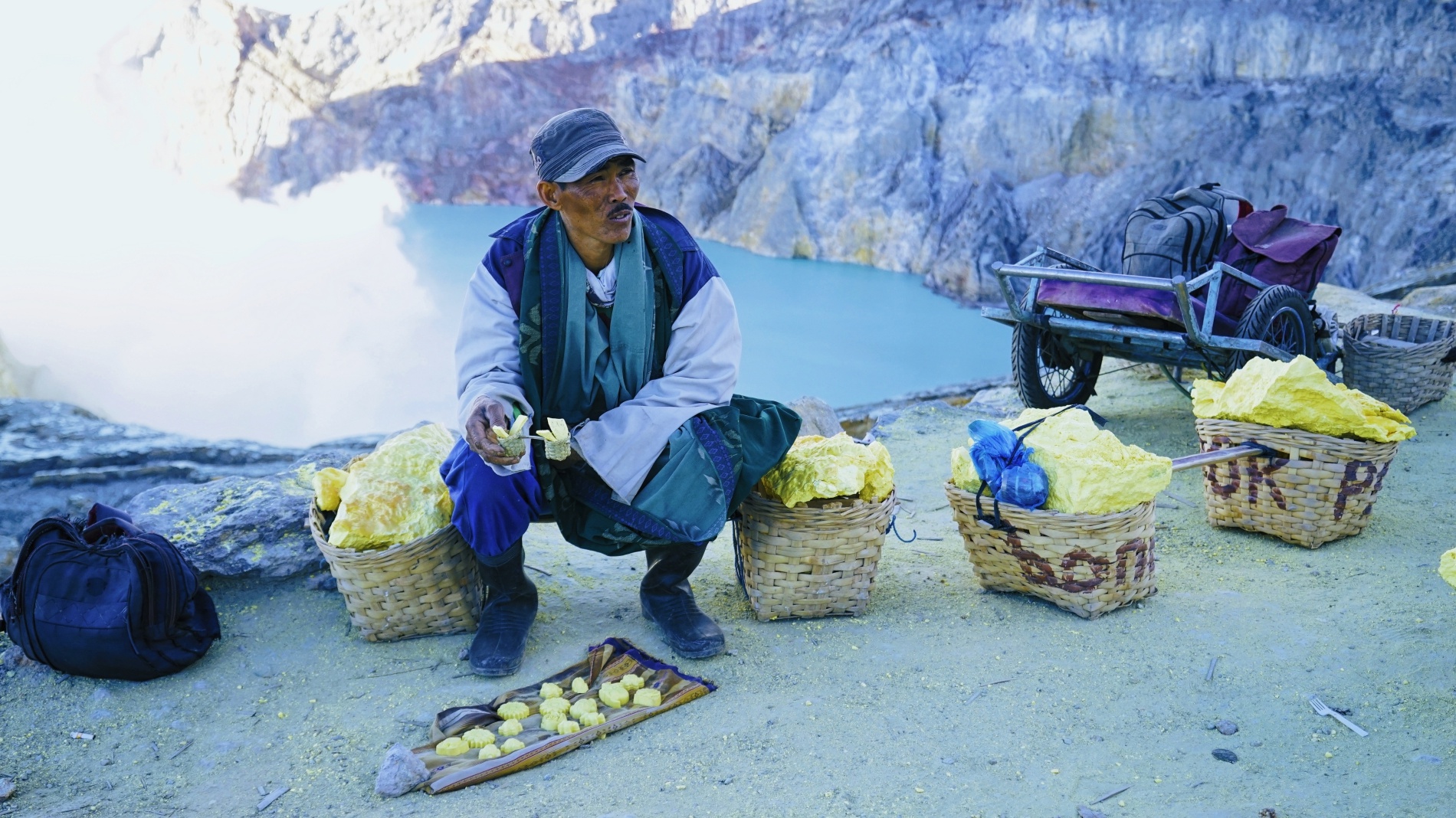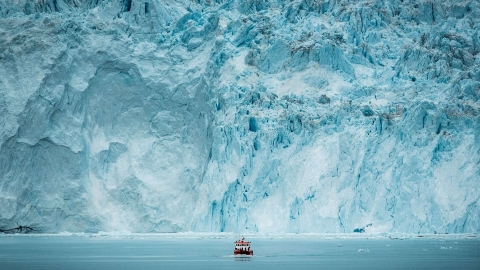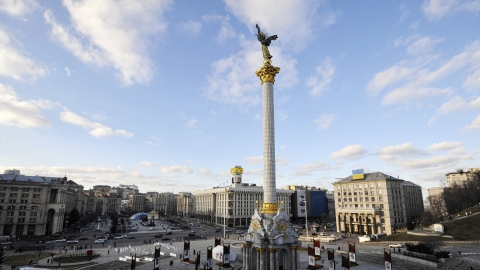Conqueror's Paradise
Ijen Acid Lake, also known as Kawah Ijen Lake, is located in the Ijen volcanic range between the Bondowoso and Banyuwangi plateaus (east of Java, Indonesia). With a radius of about 361 meters and a depth of 200 meters, it is considered the largest acid lake in the world.
To get here, visitors must land at Surabaya airport and travel by bus for 6 hours. Although it takes a long time to travel, Kawah Ijen is always one of the most favorite tourist destinations in East Java in particular and Indonesia in general.
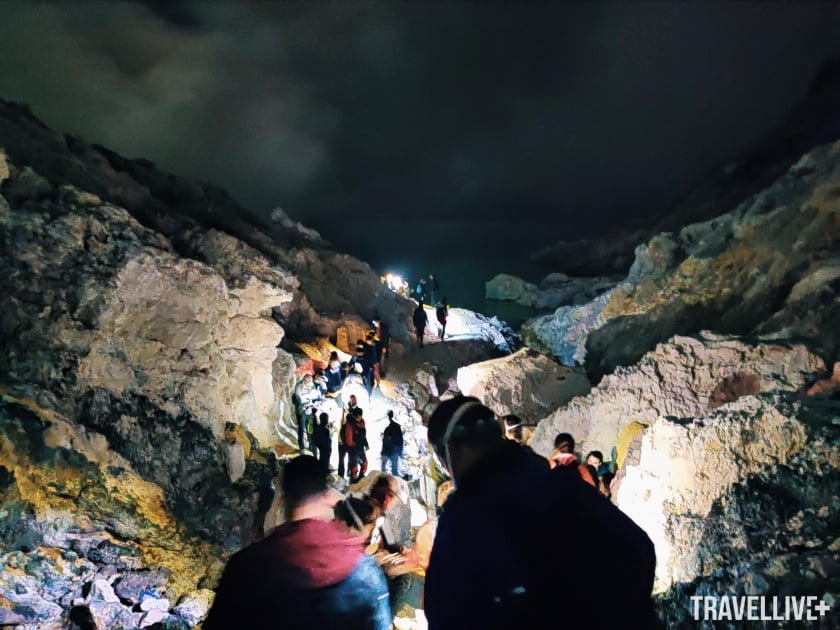
This place is always crowded with tourists regardless of the danger.
For those who love adventure, midnight is the best time to explore because from around 4am until dawn, a blue flame will appear in the burning sulfur ore. This is considered a unique phenomenon that anyone who chooses to come here will want to admire at least once.
To reach the crater at an altitude of 2,300 meters, visitors must trek a slope of 40 to 60 degrees, continuously for 3 hours if they want to see the blue flame in time. When reaching the crater, visitors will have to spend another 40 minutes moving down the mountain. This path is not long but the terrain is extremely rough and slippery. Not to mention, the space is always covered by thick smoke, smelling of rotten eggs (smell of sulfur compounds - H2S) which will reduce visibility and even the ability to breathe of visitors.
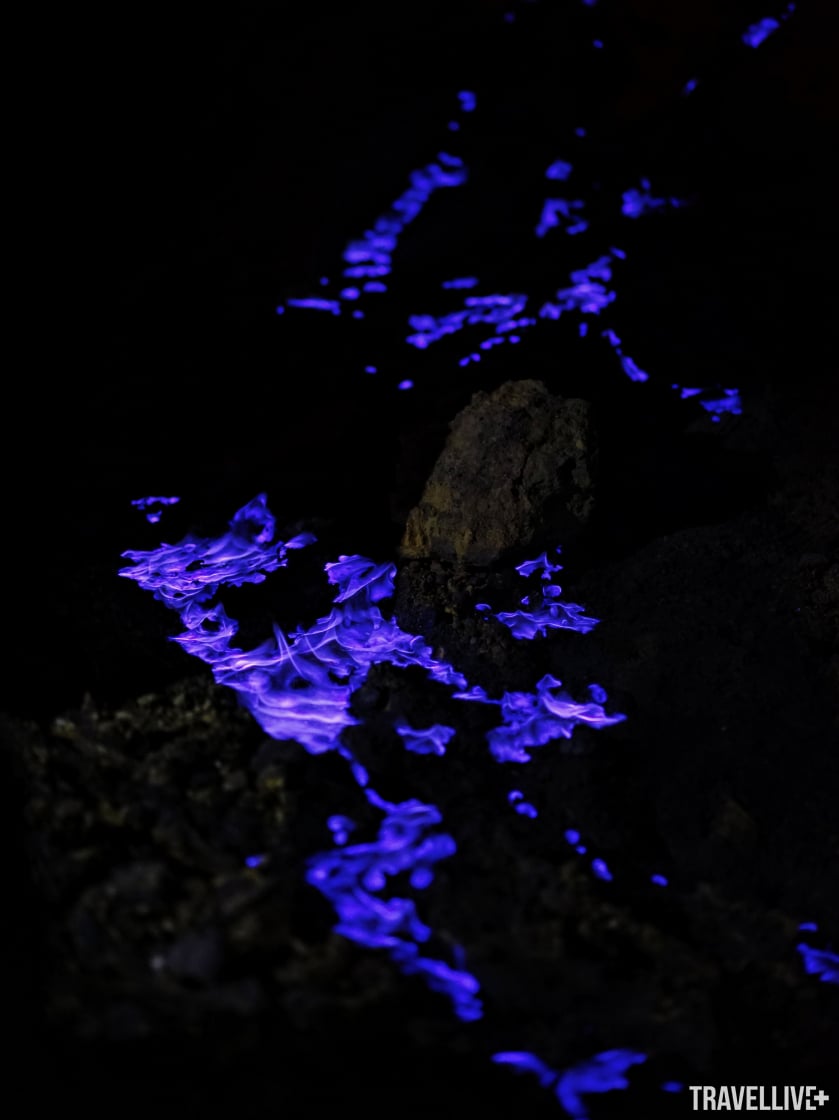
Close-up of the magical beauty of the blue flame.

In the dim space, the only light emitted is from headlamps and camera flashes aimed at the area with blue flames. Before the pandemic, visitors here could not get too close to the fire because uncontrolled flare-ups could be dangerous. After the time of opening for tourism, the locals here assigned themselves to guard positions, on duty to sprinkle water on the sulfur ore to cool the fire. Therefore, visitors can get close and even take pictures with the fire.
As the morning progresses, the smoke from the ore becomes denser and more suffocating. At this time, tired visitors are susceptible to suffocation and eye irritation. It is important to wear a gas mask and if you go on a tour, the tour guide will also give you detailed instructions and warnings about the difficulty of the approach so that you can consider your health condition.
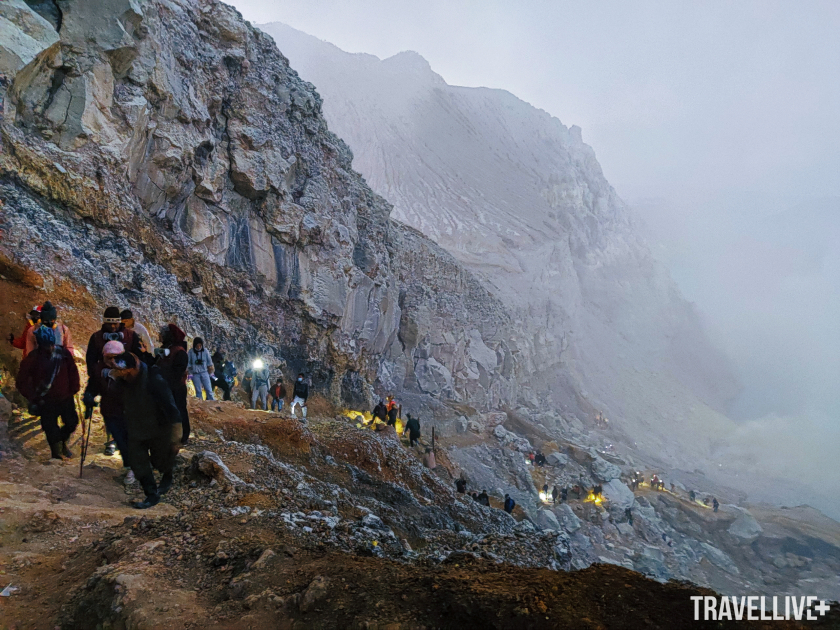
The smoke got thicker as dawn approached.
In contrast to the magical scene at night, when the sky is bright, the surface of Kawah Ijen Lake appears a stunning turquoise blue. The reason for this unique blue color is due to the sulfur in the geology here. The magma chambers below the volcano push sulfuric into the lake, combining with dissolved metals at high concentrations, resulting in gas in the lake that turns the water blue. In addition, the above process also makes Kawah Ijen crater the most acidic lake in the world with a pH of 0.5.
Toxic source of livelihood
With only a few short hours, many tourists could not bear the pressure on their respiratory system. Many people gave up when it was light and left the crater area before seeing the surface of Ijen Lake. According to the tour guides, Ijen Lake is not always clearly visible because of the thick sulfur smoke. It takes a lot of luck for tourists to be able to see it with their own eyes when the smoke has cleared. Therefore, if you are not patient enough, it is easy for tourists to give up when they are tired.
Yet this is where many local people make a living. Every day, about 300 workers come to mine sulfur. The amount of sulfur mined can be up to 15 to 45 tons per day.
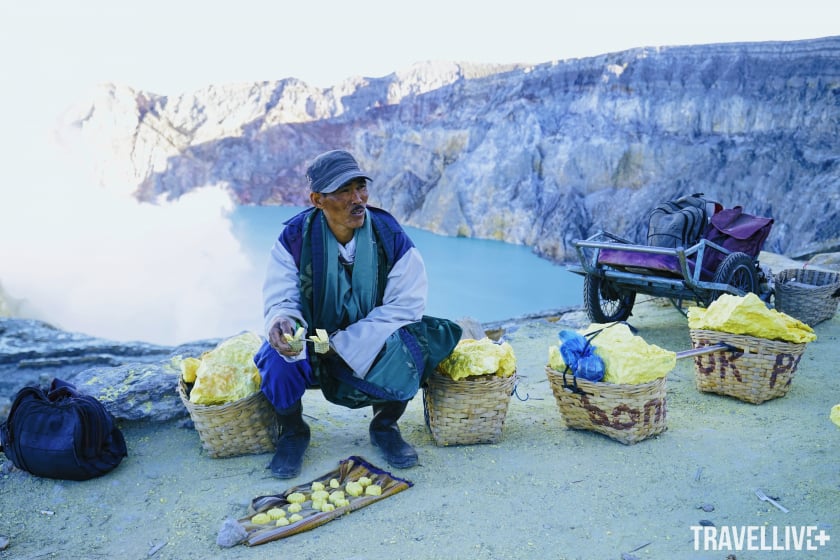
Sulfur miners with their products.
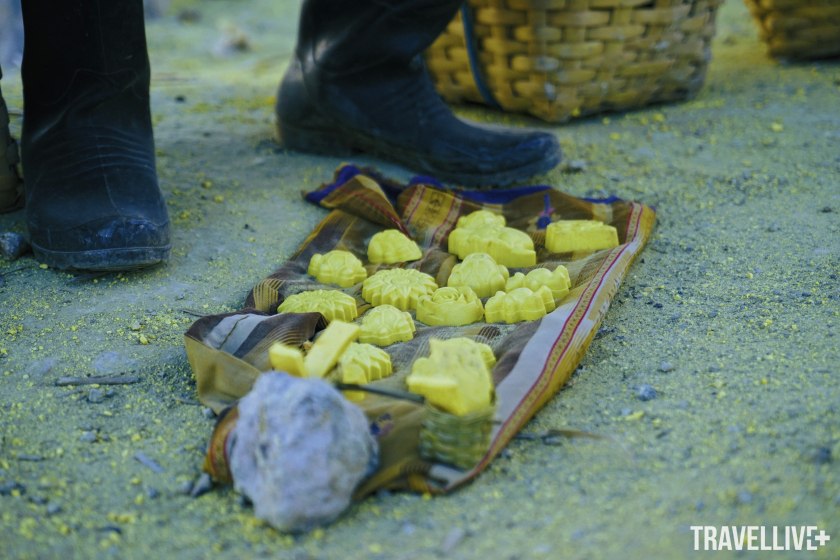
In stark contrast to the tourists’ careful protection, these men were completely unprotected. They were bare-faced, without gas masks, and their clothes were also extremely simple. The austerity could be easily found on the faces of these young men who, if you didn’t know them, you could mistake them for being in their forties or fifties.
The people in this area have a low level of education, jobs are scarce and sulfur mining seems to be the only livelihood for the working class here. These men have an average life expectancy of only 47 years because they have been exposed to sulfur all their lives without any protection.
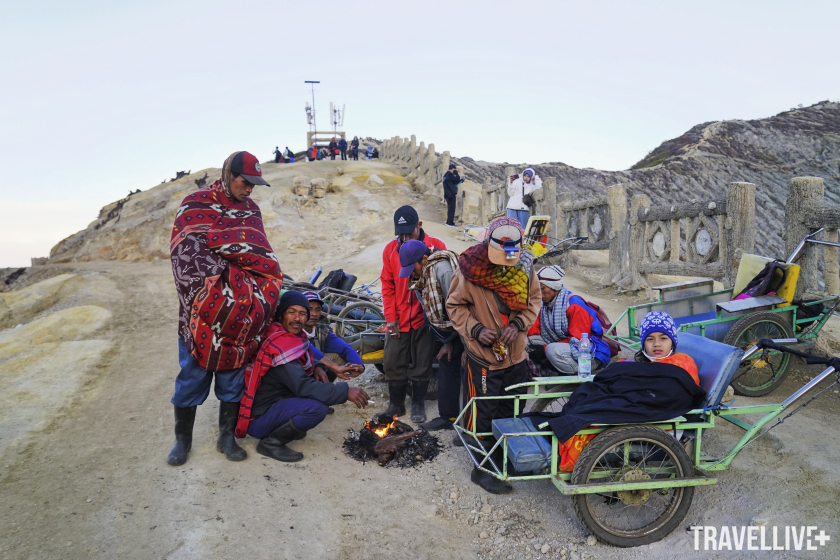
The rickshaw drivers are resting while waiting for customers.
As tourism develops, these people also know how to use it to earn more income. For example, when assigning tasks to calm the blue fire, tourists are advised by tour guides to tip these guards 20,000 Rupiah. In the morning, you will see sulfur miners selling souvenir sculptures made of solid sulfur for 30,000 Rupiah/product. Or moving up to the crater, there are also "rickshaw taxis" with a price of 800,000 Rupiah/trip, helping many tourists, even though they do not meet the physical requirements, still have the opportunity to admire the acid lake.
The people here know that their life expectancy is greatly affected, but in return, this place helps them have a livelihood. For them, this is a fair trade because perhaps they think that, if they leave this place, the hardship sometimes comes not only from physical labor but also mental pressure.






